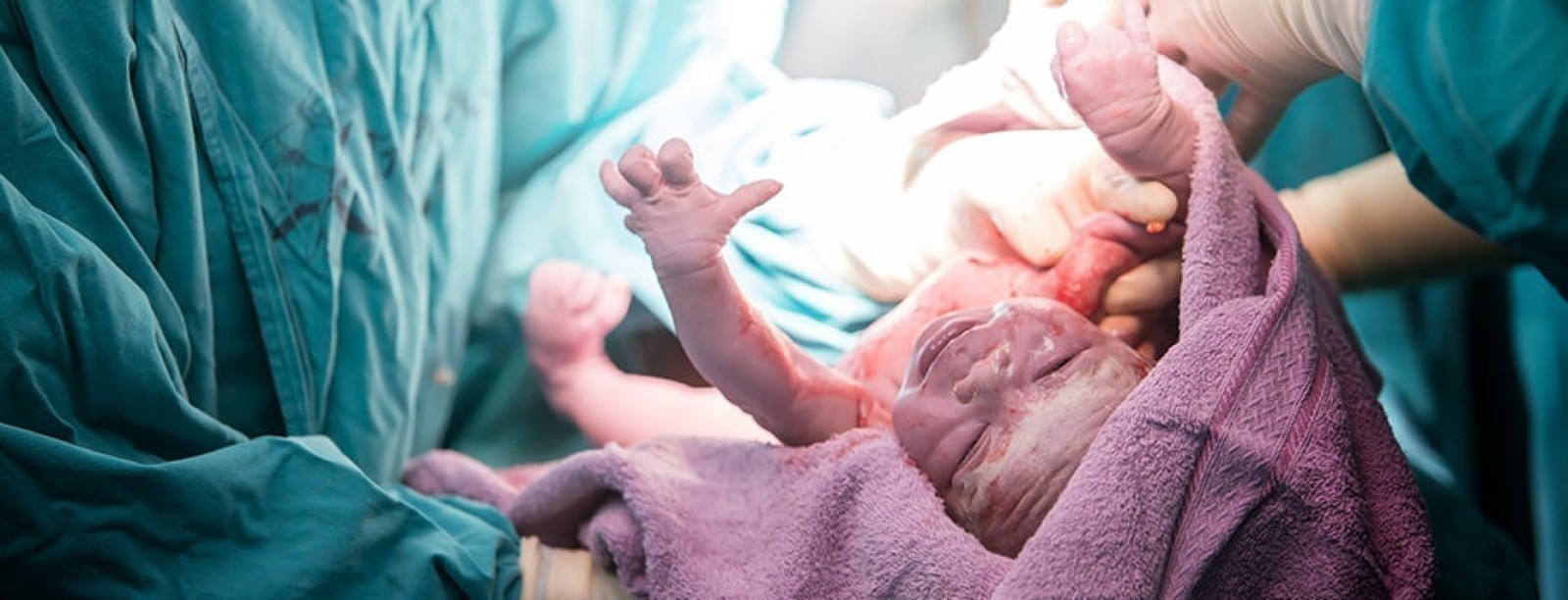
Planned C-Section
You wish to have a C-section birth. There may be medical or personal reasons which lead you to choose a C-section. In either case, your medical insurance covers the cost of the procedure and your hospital stay. A planned C-section is typically carried out 7-10 days before the due date. A C-section requires partial anesthesia, which is also known as spinal anesthesia. An anesthesiologist will discuss the procedure with you before surgery.
A C-section is performed in a calm environment. Should the father-to-be wish to be in the operating room, he will be seated at the head of the expectant mother. He will have no sight of the surgery taking place, due to the fact that the lower part of the expectant mother’s body is covered by a sterile drape. Following the surgery, the father and baby will immediately be with the mother and the baby can be breastfed as normal.
For about two days following a C-section, movement is limited due to post-surgical pain. Rest assured that painkillers are administered during recovery time, in order to overcome post-surgical pain. A C-section usually requires women to stay in the hospital for about 5-6 days.
The scar from the C-section is located in the pubic area and is about 12 centimeters long. For the most part, these scars heal very well, though some patients have developed bulge-like scars. We will advise you on how to care for the C-section scar. Please note that following a C-section, vaginal birth (VBAC) is possible should you wish to have one for your second child.
For our C-section births, we recommend our partner clinics Hirslanden, Bethanien or Zollikerberg hospitals in Zurich.
Secondary C-section
A secondary C-section may be deemed necessary as a medical intervention if, during labor, it is discovered that vaginal birth is no longer possible. Unfortunately, sometimes this can only be detected after a few hours of labor, because only then is it possible to properly assess whether the baby has entered the birth canal correctly. In this situation, there should be sufficient time to discuss how to proceed with the expectant parents. Both pros and cons of different options shall be discussed, with a partial anesthetic given to the expectant mother.
Within such a calm environment, there is no need for alarm. The birthing experience can still be very pleasant.
Emergency C-section
An emergency C-section is fortunately seldom necessary.
Low levels of oxygen for the baby and excessive bleeding of the birthing mother are two reasons an emergency C-section may be necessary. In such situations, preparations for a C-section have to be done promptly and there’s little time for explanations.
Regardless of the urgency of the situation, we will make every effort to handle everything in a calm manner. A partial, or spinal, anesthesia will usually be administered to the mother. Should it be deemed necessary and safer for the baby due to time constraints, general anesthesia would be administered instead, though this is very rare.